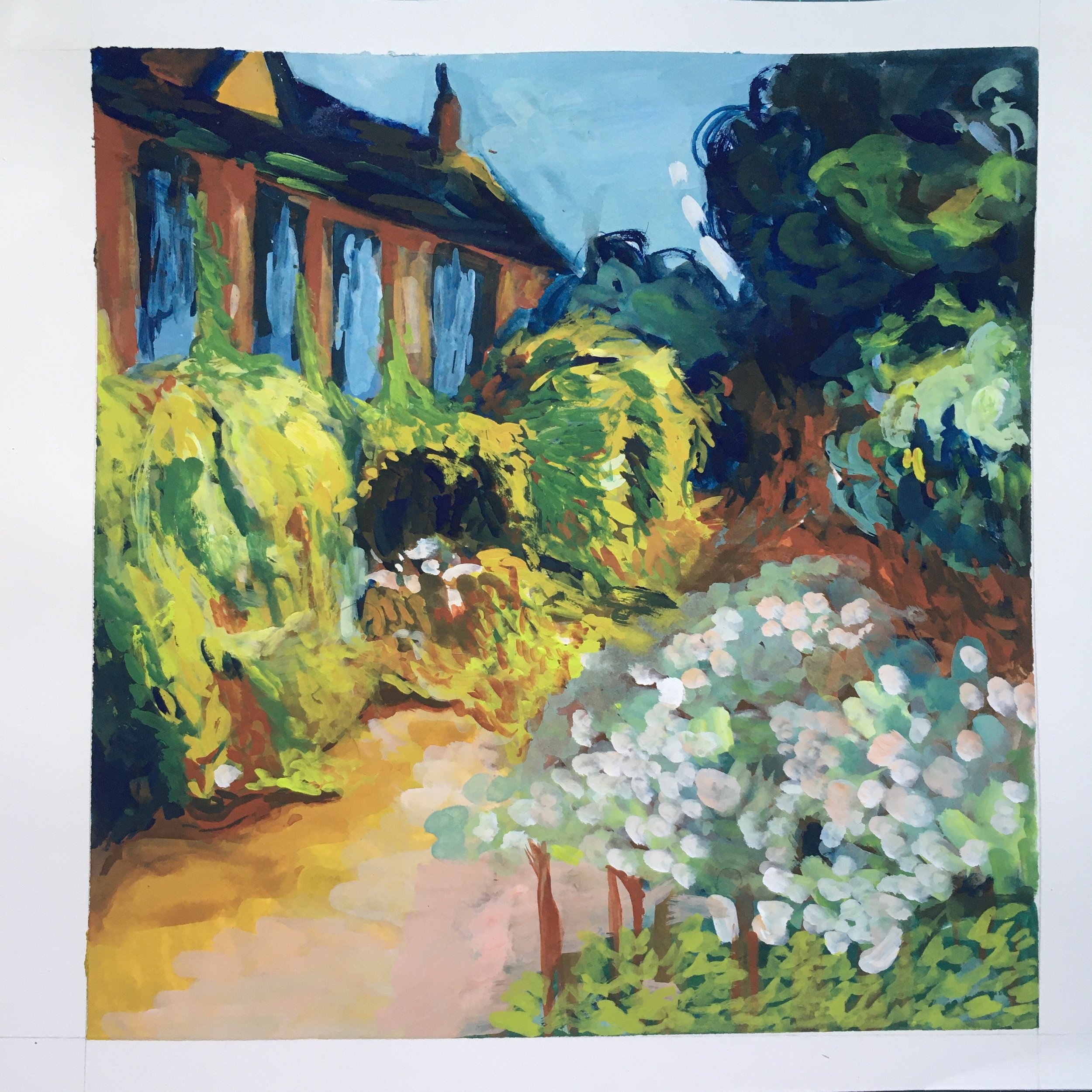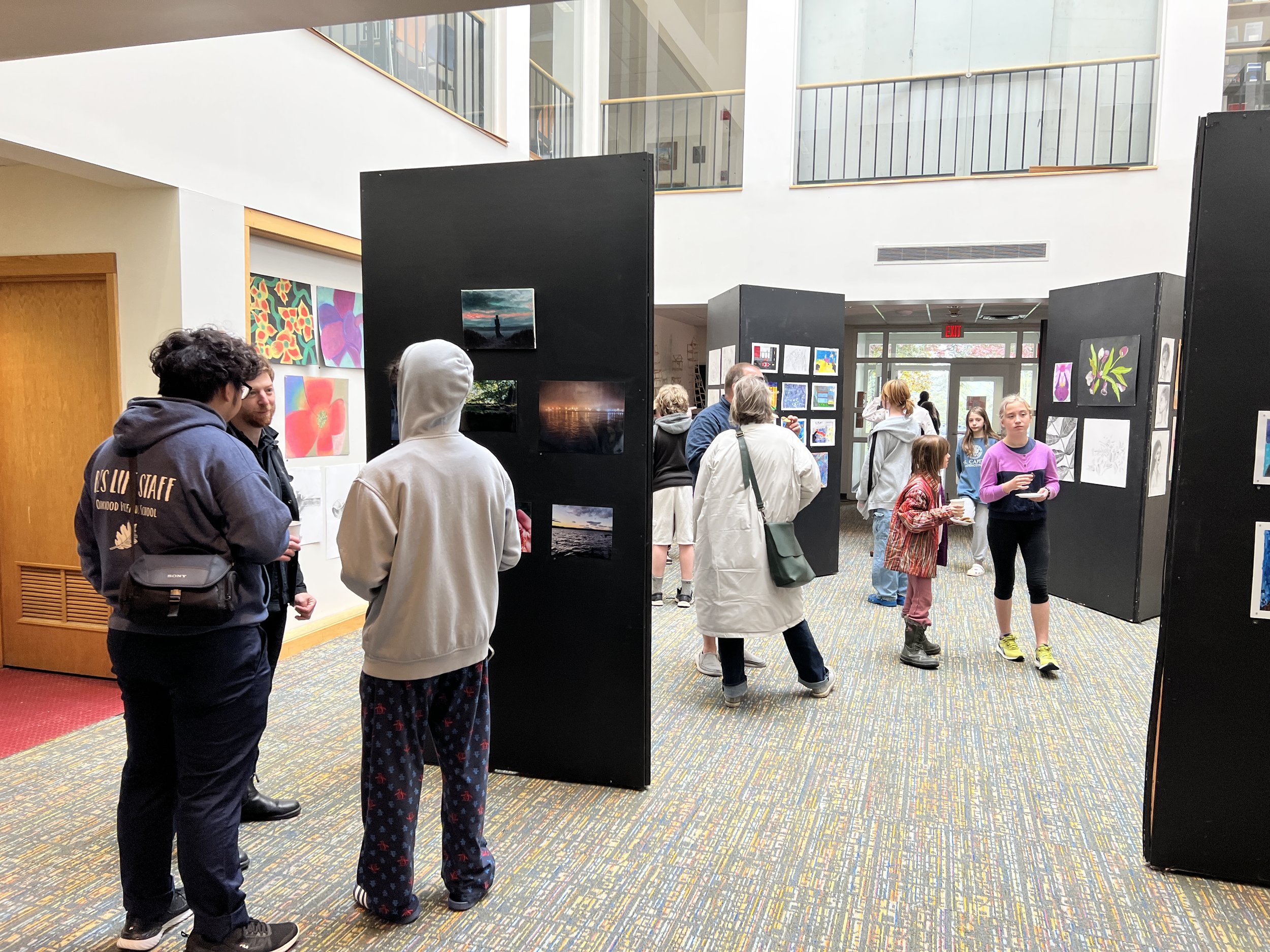Erin Koch has been an Art Educator for non-profits and in classrooms K-12 for over 20 years. She has worked for the Experience Art Project Seattle, Studio in a School NYC and for the Oakwood Friends School in Poughkeepsie, NY. Her Studio Art curriculum is based in New York State standards for art education and includes drawing, painting, sculpture, collage, fiber art, mosaic, and printmaking as well as digital art and stop motion animation. Classes include studio art skill building such how to draw from life, as well as classes for personal reflection and exploration such as working from imagination and memory. Collaborative community building projects are a valued way to express the culture of a school, and work across curriculum with core teachers.. Art History is integral to understanding the cultural value of art, as well as provides inspiration through exposure to new ideas. Erin believes in working with the natural inclinations of children and teens through classroom differentiation so that they can achieve success, and develop an appreciation for the process of making art. Please scroll to read more about what it’s like to be a student in my class.
Art with littles under 10 is about cultivating joy and wonder for self expression and exploration. Students are exposed to new materials and experiment with color mixing and mark making. They are encouraged to begin learning the language of art through story telling and sharing ideas. Lessons are sensory based, with easy access to inviting materials.
Drawing is a natural expression for children and teens, and is the foundation of Studio Art. Students have their sketchbooks are encouraged to draw daily. Through drawing, students learn to deeply observe, express themselves, explore their ideas and develop visual language. Drawing classes include drawing from life, from imagination, and as a method for planning and expressing ideas for projects. Learned skills include contour line drawing, shading, perspective and foreshortening, and composition.
Students love to mix and layer paint. Foundation painting lessons include color theory, color mixing and layering. Students might paint a still life, landscape or copy a master painting. In advanced painting, students research an area of interest, then sketch a composition that conveys a message. They work on a single painting that for an extended period of time or may work in a series.
Sculpture is an important part of an art classroom and I always have a sculpture center full of recycled plastics, cardboard and various items for kids to choose from. Sculpture tends to engage students who have trouble concentrating due to its tactile hands-on nature. Sculpture classes might include building an imaginary scene, sculpting an animal, or building tall structures that are stable and strong. Students are challenged and must problem solve to find innovative solutions. Materials include paper mache, wood and cardboard, recycled plastics, wire, foil, and modeling clay.
Stop Motion animation is magical for the students as they learn to animate the inanimate. Students engage their projects wholeheartedly, creating sets and characters. Students might create a claymation, use dry erase for hand drawn animation, make paper puppets, use legos, or animate household objects. Often, students will pair up and work together. They also really appreciate using sound effects and music to highlight their work. More advanced classes involve video editing, using multiple camera points of view, and creating storylines.
Fiber Art is accessible and pleasing for students. Classes include sewing, embroidery and weaving. Students are drawn to the tactile nature of fiber art and find it relaxing. Students learn about fiber arts around the world including the natural and synthetic materials that create textiles, how they are spun and dyed, and what materials they become.
Mural making is a wonderful way for a community to work together to express core community values. In the photo above, students designed a mural for the side of the Oakwood Friends Middle School. The central feature of the mural is a large monarch butterfly, who’s migration from Mexico to New York takes four generations to accomplish. Students added the Quaker values called SPICES: simplicity, peace, integrity, community, equality and stewardship. This mural consists of 15,000 mosaic pieces and took three months to complete.
Digital Art and allows children to express their ideas more freely without the challenge of drawing or painting. Kids delight in learning the various tools powerful available in Photoshop. Kids can use their smart phones and stock photos from the internet for their source imagery. This is a class where there is a lot of laughter as students are surprised by the juxtaposition of images, or the distortions that are possible. Personally, I think it is important for students to have some experience with digital art tools, AI, and to learn to recognize these images online.
In film photography, students learn about the chemistry of black and while film through progressive steps. They are taught the mechanics of a camera and how to make a balanced photo using the ISO, aperture and F-stop. Students walk back in time to the early days of photography by making pin hole cameras. In the dark room, they learn to develop film, make a contact sheet, use an enlarger and develop a print.
Collage enables kids to move around big shapes and bright color and explore various compositions. They learn about negative space and how to use it effectively in their art. Beginner collage students might use magazine and internet photos with images that represent themselves. More advanced collage explores mixed media.
Field trips to museums are an important aspect of teaching art. In this way, students learn about different art movements and styles. They are encouraged to learn the stories within paintings, as well as about the life of the artist. Art History is built into Studio Art classes. As well as looking at and discussing art, students might be asked to deepen their learning by giving a presentation on an artist.
Group critique is a way for students to discuss their art, and the art of their peers. They practice the language of art, reflect on the choices they made and why, and say what they have learned. Each student’s work is unique and they approach the same topic differently. Critique focuses on a student’s ability to articulate that uniqueness.
Presentation is an important aspect of part of sharing art and group shows bring together community and family to celebrate the arts. Students prepare their work for a show by matting it. Students learn about how to arrange art so that it works well together on a wall. They also have a chance to write an artist statement describing the choices they made, and why.
Cross curricular learning provides students with new ways of approaching topics and enables a richer understanding. In this project, I paired with the Mid-Hudson Anti Slavery History Project to teach middle schoolers about the slavery and abolitionist movements in this area. Students researched a topic of their choice, then created a quilt block about what they learned. They also learned about the history of African American quilting in our nation.
















